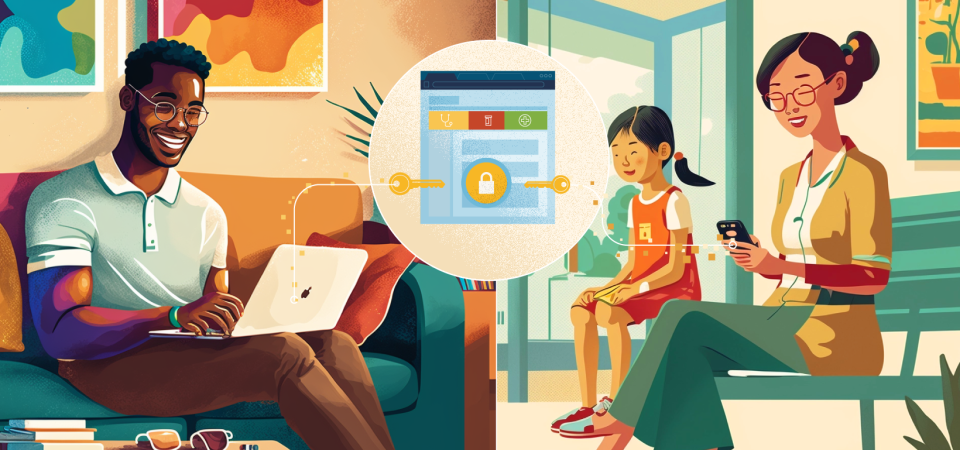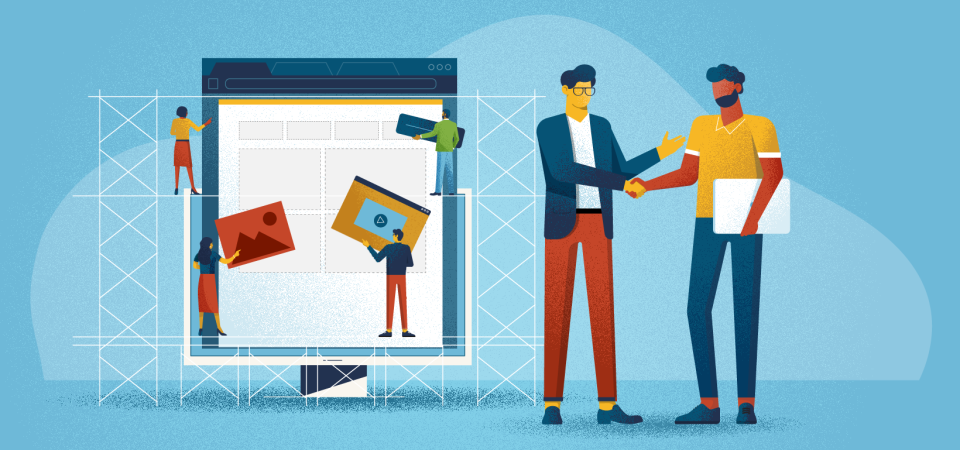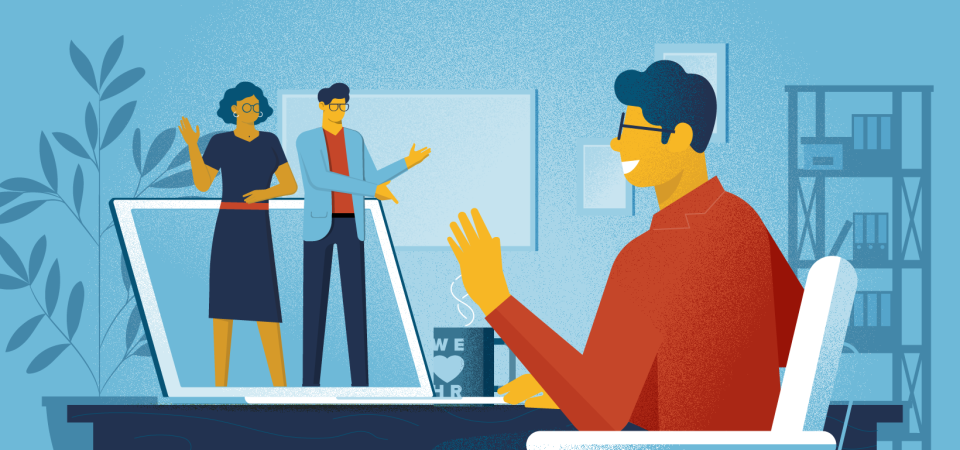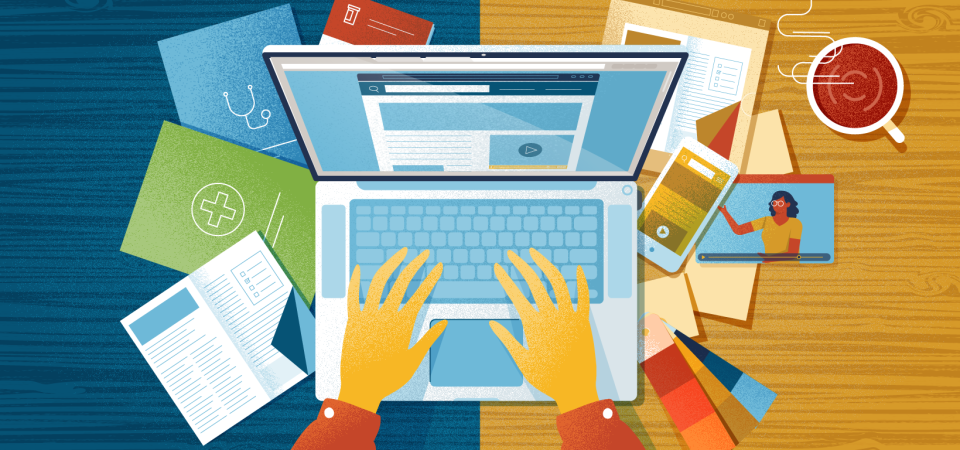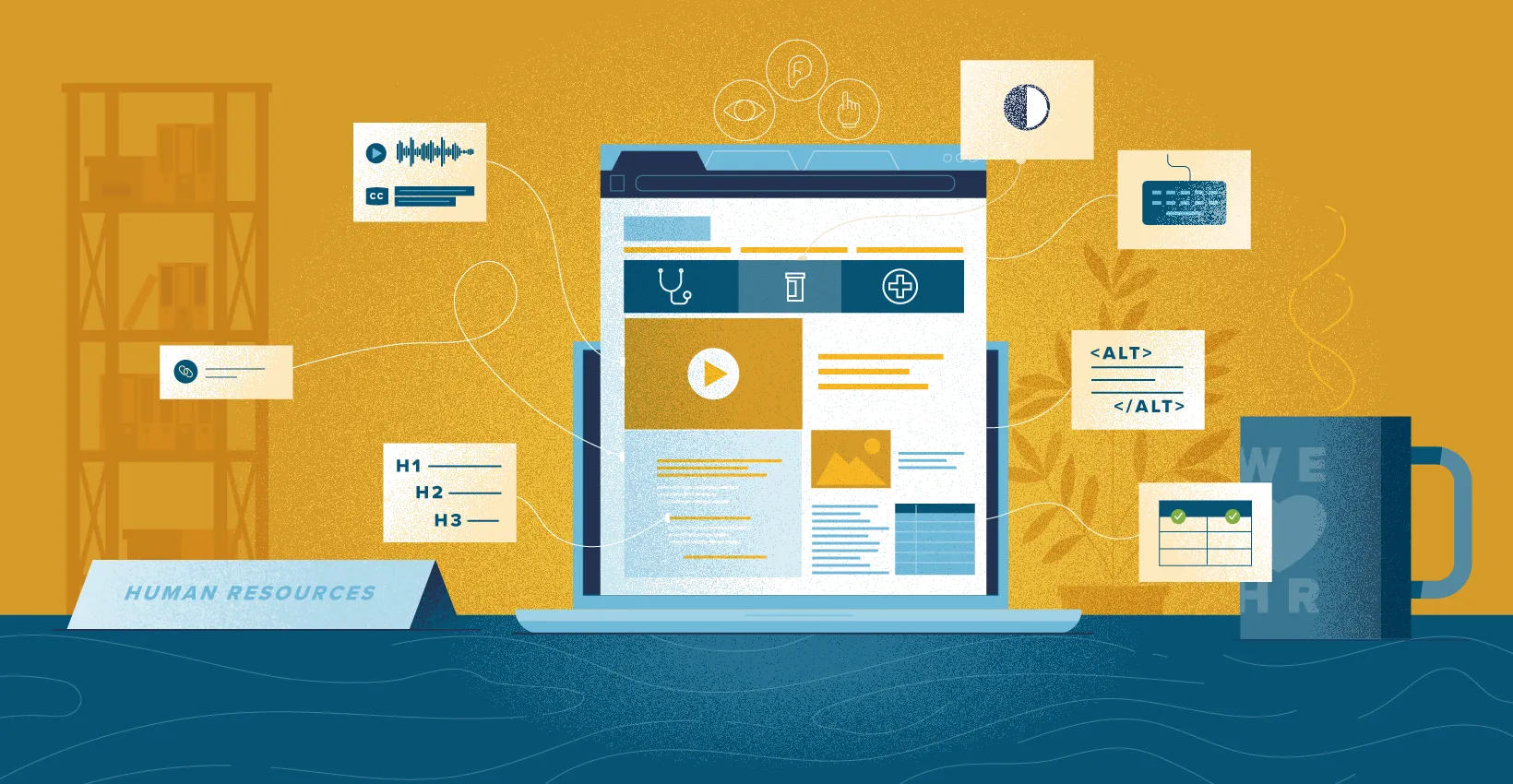
An easily overlooked way to show your employees some love is to make your HR digital channels more accessible. More workplace communication happens through digital channels, so the need for digital accessibility in HR is growing Besides, it’s the law.
A version of this blog post appeared on EBN.com. You can read it there if you’d like.

What is Web Accessibility?
Web accessibility means accounting for disabilities when building any web-based product. For HR this relates to employee-facing digital products like benefits microsites, decision support quizzes, and even videos, and pdf documents. To ensure there’s a standard for these accommodations, the World Wide Web Consortium (W3C) maintains a definitive set of guidelines known as the Web Content Accessibility Guidelines (WCAG).
Why Should HR Care?
Why does something that sounds as technical as web accessibility fall under the purview of HR? As Ashish Tiwari of pdf accessibility solution provider CommonLook writes, “The HR department ensures that its employees have a positive work environment, they are compensated fairly and they have access to every digital and technological asset that they need to perform their duties.”
Web accessibility becomes an HR issue in 3 main ways:
1. IT Improves the Employee Experience
If an employer is to justifiably make the claim that they’re providing an equitable work environment, then all employees should have equal access to all communications. As our very own Technical Director, Philip Joyner explains it,
“If the goal of HR’s is to serve all employees then it must reach every employee regardless of their sensory abilities. Web has a unique place where any employee can navigate and view the same information in ways that meet their needs. Traditional print, mail and in office signage can’t be “read” by everyone. A site, if built correctly, can serve everyone.”
2. It’s the Law
If providing a good digital work environment wasn’t enough of a good reason, how about not getting sued? Just as the Americans with Disabilities Act (ADA) relates to physical accommodations, it pertains to websites as well. As Beyonce Knowles’ Parkwood Entertainment found out the hard way in early 2019. They were one of the thousands of lawsuits filed in 2019 alleging violations of the ADA in digital content.
But even if you’re not managing the website of a world-famous superstar, that doesn’t mean you’re immune to scrutiny. In Dec 2018, Epic Systems was sued by the NFB due to their lack of accessibility features on the employee side of their software, even though the public-facing software had accommodations for screen-readers. As digital accessibility leader UsableNet writes in their 2021 Year-End Report, “The bottom line is if websites, mobile apps, and content are not accessible, there is a chance to receive multiple ADA lawsuits, regardless of how many times a settlement has been reached.” In fact, there were over 4000 ADA-based cases, where the subject of the claim was either a website, mobile app, or video content in 2021, a 15% increase from 2020.
3. It Benefits Everyone
The population of employees who directly benefit from WCAG measures is larger than you’d think, as there are people with varying degrees of impairments that use assisted devices to navigate the web. Besides, as with other accommodations for people with disabilities, WCAG compliance improves the experience for everyone else. According to Usability.gov,
“Case studies show that accessible websites have better search results, reduced maintenance costs, and increased audience reach, among other benefits.”
So What Now?
Evaluate
If all this has managed to convince you that web accessibility is vital to HR communications then you could get started by running an accessibility evaluation on your current digital content. You could start small by using a tool like CommonLook PDF Validator, a free Adobe Acrobat plugin that checks a pdf doc for accessibility issues. Then work your way up to any video content embedded on any digital channels and finally your benefits microsite. If that seems like a daunting task then reach out and we’ll point you in the right direction.
Educate
If you’re interested in reading more about what you can do to improve your digital content’s accessibility, the A11YProject has a comprehensive checklist that’ll help you through the evaluation process.
Create
Then you’ll be in a good position to keep accessibility in mind when creating any new digital content. It’s always easier to get it right from the start. So make sure your web designers & developers (in-house or outside vendors) are paying attention to WCAG guidelines when building.

